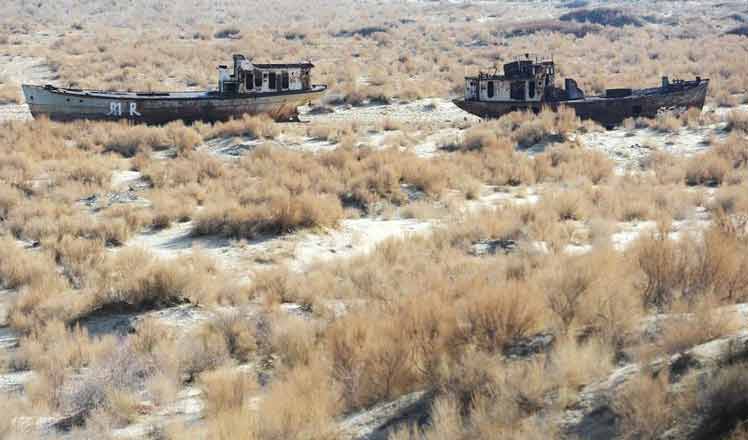Belt and Road bodes well for Africa
Continent looks forward to more tangible economic benefits to ensure long-term, 'win-win' partnership
The Belt and Road Initiative launched by President Xi Jinping in 2013 is not only China's promising global grand strategy, but also the centerpiece of its foreign policy. It seeks to re-establish China's traditional economic influence along the land-based Silk Road Economic Belt and the sea-based 21st Century Maritime Silk Road trading route to connect China with Southeast Asia, South Asia, the Middle East, Africa and Europe.
For Africa, this creates a big window of opportunity for deepening Sino-African relations and spurring economic growth and development through the global network.
China also views Africa as an integral part of its aspirations to become a more involved world leader in global affairs commensurate with its growing economic status. In this regard, Africa needs to examine and explore the means to best utilize the immense diplomatic, cultural, trade and investment opportunities provided by the Belt and Road. This means devising an aggregated policy mix that leads to some degree of economic rebalancing to guarantee that this relationship becomes a long-term, "win-win" partnership.
According to Professor Peter Kagwanja, chief executive of the Africa Policy Institute, "Africa needs a long-term strategy to profitably engage China in order to reap maximum benefits for its people."
In this regard, the Forum on China Africa Cooperation was founded in 2000 and consists of 50 African countries and China. The last FOCAC meeting in December 2015, held in Johannesburg, South Africa, culminated in the Johannesburg Action Plan under the theme "China-Africa Progressing Together: Win-Win Cooperation for Common Development". As a result, FOCAC was subsequently upgraded to a "new type of comprehensive strategic and cooperative partnership" that links Africa's transformation aspirations to China's own ongoing transformation.
Other welcome initiatives include the "461 framework", which is a cooperation framework proposed by China that includes four principles (equality, solidarity/mutual trust, tolerance in development issues, innovative cooperation) six major projects (industrial cooperation, financial cooperation, poverty alleviation cooperation, environmental protection cooperation, civil and cultural exchanges cooperation and peace and security cooperation) and one platform, the FOCAC.
The Belt and Road Initiative is closely aligned with the African Union's long-term Vision and Action Plan, dubbed Agenda 2063, which is the strategic blueprint for the continent's socioeconomic transformation over the next 50 years. In particular, it complements Africa's aspirations to have world-class connectivity through an integrative infrastructure that crisscrosses the entire continent. This means developing bold new initiatives to link the continent by "four networks" (high-speed rail, highways, regional aviation and maritime ports). The Belt and Road Initiative not only supports this plan, but further extends Africa's links with the Middle East and Asia. Agenda 2063 also outlines Africa's renaissance vision by accelerating progress toward continental unity and integration for sustained growth, trade and exchanges of goods and services, as well as free movement of people and capital.
Some of China's key infrastructure investments in Africa include Ethiopia's first electrified railway linking its capital and Djibouti, which was launched in October. In Kenya, the first phase of the Nairobi-Malaba Standard Gauge Railway project will be launched in June. It has been lauded by Kenyan President Uhuru Kenyatta as the modern railway line that will catalyze Kenya's industrial transformation and position the country as an investment hub. It is the largest infrastructure project undertaken by the country since its independence in 1963.
Other projects include Zimbabwe's Victoria Falls International Airport, upgraded and expanded with support from China, the Abuja-Kaduna railway in Nigeria and the Nyerere Bridge in Tanzania. The Belt and Road Initiative is expected to overlap continental initiatives and cover more African states soon. For instance, in March 2017, China and Madagascar agreed to synergize development strategies under the framework of the Belt and Road based on its expediency and utility in accelerating development.
For the most part, African leaders and ordinary citizens have so far welcomed Belt and Road and China's involvement in the continent with positive sentiments because of the contribution and financial investment China brings to Africa. One of the key factors contributing most to China's positive image is the expertise and capital for infrastructure development that the country brings and the promising prospects of manufacturing investment expected to soon follow.
While it is clear that China's infrastructural footprint is in Africa to stay through the Belt and Road and other initiatives, Africa looks forward to more tangible economic benefits, particularly in setting up manufacturing bases and increased job creation.
The author is the director of the Center for Strategic Policy Management at Africa Policy Institute. The views do not necessarily reflect those of China Daily.
(China Daily Africa Weekly 05/26/2017 page13)




















